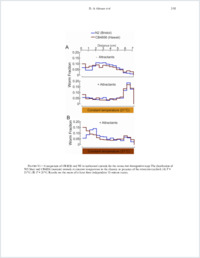Heat avoidance is regulated by transient receptor potential (TRP) channels and a neuropeptide signaling pathway in Caenorhabditis elegans
- Glauser, Dominique A. Departments of Molecular and Cellular Physiology, Stanford University, Stanford, USA / Department of Biology / Zoology, University of Fribourg, Switzerland
- Chen, Will C. Genetics, §Biology, Stanford University, Stanford, USA
- Agin, Rebecca Departments of Molecular and Cellular Physiology, Stanford University, Stanford, USA
- MacInnis, Bronwyn L. Departments of Molecular and Cellular Physiology, Stanford University, Stanford, USA. - Wellcome Trust Sanger Institute, Hinxton, UK
- Hellman, Andrew B. Microbiology and Immunology, Stanford University, Stanford, USA
- Garrity, Paul A. Department of Biology and Center for Behavioral Genomics, Brandeis University, Waltham, USA
- Tan, Man-Wah Genetics, §Biology, Stanford University, Stanford, USA - Microbiology and Immunology, Stanford University, Stanford, USA
- Goodman, Miriam B. Departments of Molecular and Cellular Physiology, Stanford University, Stanford, USA
-
07.03.2011
Published in:
- Genetics. - 2011, vol. 188, no. 1, p. 91-103
English
The ability to avoid noxious extremes of hot and cold is critical for survival and depends on thermal nociception. The TRPV subset of transient receptor potential (TRP) channels are heat-activated and proposed to be responsible for heat detection in vertebrates and fruit flies. To gain insight into the genetic and neural basis of thermal nociception, we developed assays that quantify noxious heat avoidance in the nematode Caenorhabditis elegans and used them to investigate the genetic basis of this behavior. First, we screened mutants for eighteen TRP channel genes (including all TRPV orthologs) and found only minor defects in heat avoidance in single and selected double and triple mutants, indicating that other genes are involved. Next, we compared two wild isolates of C. elegans that diverge in their threshold for heat avoidance and linked this phenotypic variation to a polymorphism in the neuropeptide receptor gene npr-1. Further analysis revealed that loss of either the NPR-1 receptor or its ligand, FLP-21, increases the threshold for heat avoidance. Cell specific rescue of npr-1 implicates the interneuron RMG in the circuit regulating heat avoidance. This neuropeptide signaling pathway operates independently of the TRPV genes, osm-9 and ocr-2, since mutants lacking npr-1 and both TRPV channels had more severe defects in heat avoidance than mutants lacking only npr-1 or both osm-9 and ocr-2. Our results show that TRPV channels and the FLP-21/NPR1 neuropeptide signaling pathway determine the threshold for heat avoidance in C. elegans.
- Faculty
- Faculté des sciences et de médecine
- Department
- Département de Biologie
- Language
-
- English
- Classification
- Biological sciences
- License
-
License undefined
- Identifiers
-
- RERO DOC 22248
- DOI 10.1534/genetics.111.127100
- Persistent URL
- https://folia.unifr.ch/unifr/documents/301913
Other files
Statistics
Document views: 123
File downloads:
- pdf: 317
- Supplementary material: 152

